Ghost Orchid: How To Grow This Rare & Beautiful Flower
The native ghost orchid – or Dendrophylax lindenii – is the most coveted species among home growers, but it is not for the faint-hearted. Discover how to get started growing these rare, enchanting flowers.
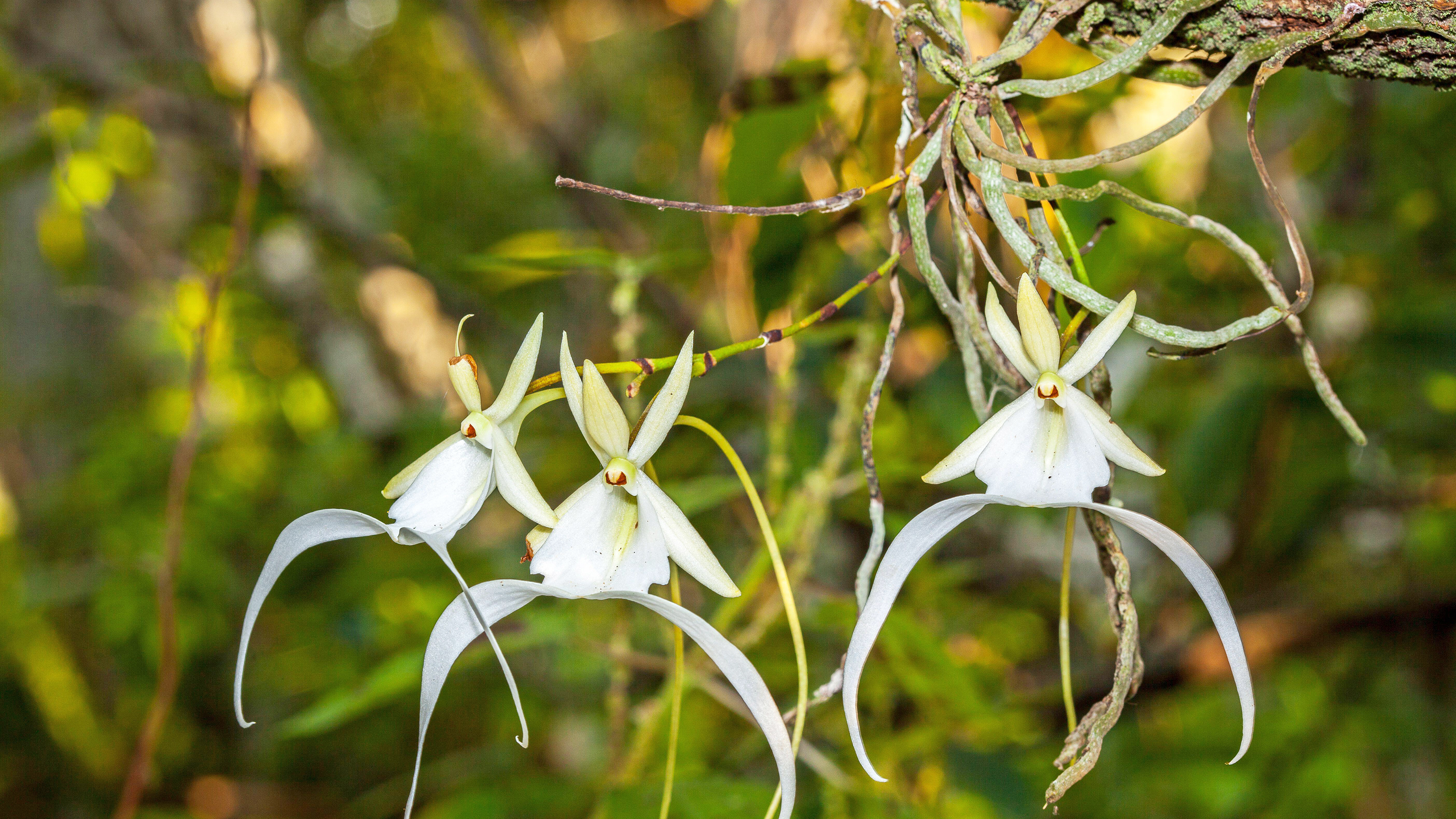

Mary H. Dyer
The ghost orchid (Dendrophylax lindenii) is a rare and endangered native flower that has long fascinated gardeners. Also known as “palm polly” or “white frog orchid”, Dendrophylax lindeniii is a different species to Epipogium aphyllum, another rare orchid known as the ghost orchid, that grows in Europe, Russia, and Asia.
Their unique appearance and rareness make ghost orchids highly coveted among growers looking to cultivate unusual types of orchids. However, orchid care for Dendrophylax lindenii is challenging for even experienced growers.
Ghost Orchid Quick Facts
Botanical name: Dendrophylax lindenii
Height: 9 inches (20cm)
Spread Roots: May spread 20 inches (50cm)
Sun exposure: Bright indirect light
Soil requirements: Grows on tree bark
Hardiness zones: 10-11, or indoors in a controlled environment
When to plant: Early spring
Ghost orchid flowers are white and have an other-worldly appearance that lends a mysterious quality. Their sweet scent is only released at night, to attract giant sphinx moths that pollinate the plants.
As ghost orchids have no foliage, flowers appear suspended in the air as the epiphytic plants tightly attach themselves to tree trunks via aerial orchid roots. They grow on several tree species, including cypress, pond apple, and maple.
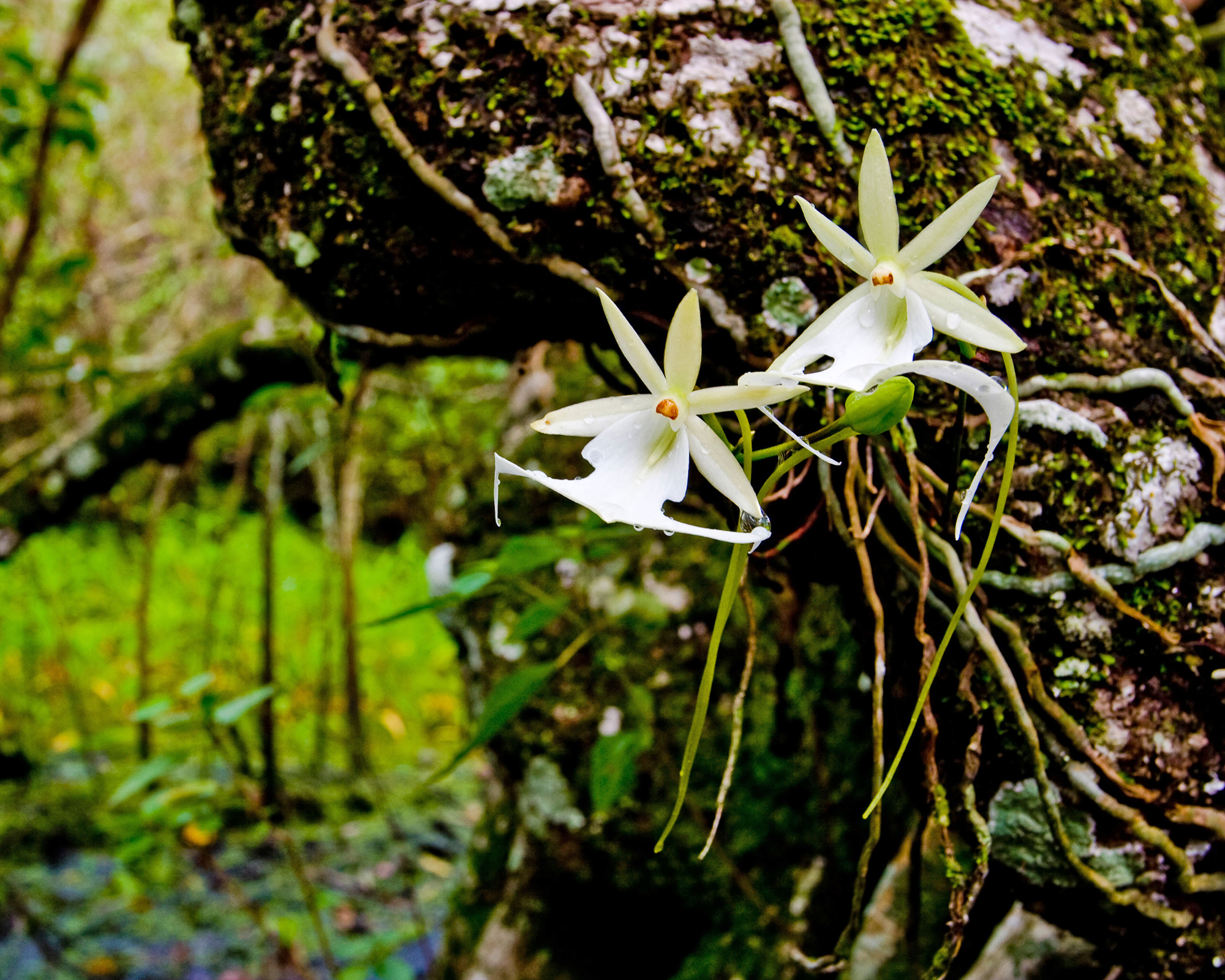
Where Do Ghost Orchids Grow?
The ghost orchid is found primarily in humid, marshy areas of Florida, Cuba, and the Bahamas.
Like most wild orchids in the United States, ghost orchid plants are threatened by the loss of pollinators, pesticides, and climate change.
Scientists estimate that only about 1,500 ghost orchid plants are growing wild in Florida, and the location of many of these native orchids is not known publicly, due to the threat from poachers.
Gardening tips, videos, info and more delivered right to your inbox!
Sign up for the Gardening Know How newsletter today and receive a free copy of our e-book "How to Grow Delicious Tomatoes".
Removing one from the wild is illegal, and, in any case, people who manage to remove an orchid from its environment are usually disappointed when the plant soon dies.
In recent years, botanists have made good progress in devising sophisticated means of seed germination for ghost orchids, and have reintroduced a number to the wild.
However, you are highly unlikely to come across one on a visit to the Everglades. Your best bet is to visit sanctuaries where they are growing, such as the Audubon Corkscrew Swamp Sanctuary.
How To Grow Ghost Orchids
Ghost orchids have very particular requirements that make them difficult to grow – but not impossible. It is only natural that orchid aficionados will want to challenge themselves by growing this elusive beauty. But they require perseverance, trial and error, and often deep pockets.
It is illegal to buy wild plants, but young plants cultivated in captivity can be purchased via specialist growers and retailers. As the demand outstrips supply they are expensive to buy.
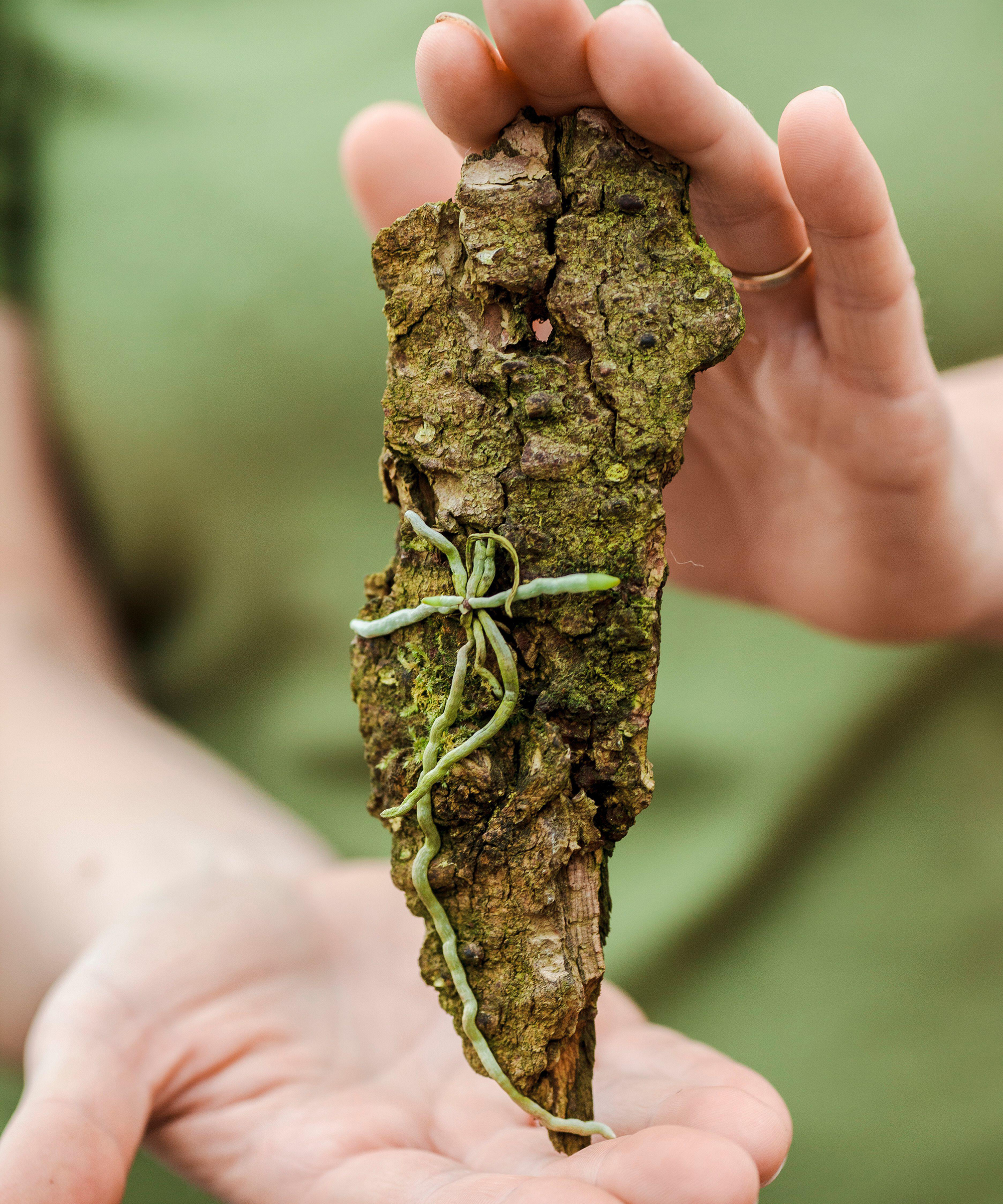
Mounting Ghost Orchids
The main challenge when growing ghost orchids is to mount plants on a suitable substrate. Unlike most orchids grown by home gardeners, ghost orchids cannot simply be planted into a commercial orchid potting medium.
While young plantlets can be grown on a bed of live moss, they will eventually need to be transferred to their permanent home on tree bark. This must be large enough to accommodate the mature plant size, as once mounted ghost orchids cannot be moved.
Plants are slow-growing and take several years to reach maturity before they bloom. Therefore, the substrate must have a long lifespan before it decays – ideally decades. It must also be able to hold moisture without rotting and have a living patina of moss and lichens. These will help to give the orchid moisture and nutrients via its roots, which is vital as the plant does not have the water-storage capacity of some other orchid types.
Old hickory bark or Florida buttonwood are recommended bark species, although some growers have had success with cork slabs and even clay pots.
Spanish moss is a good addition to the mount and should cover around a third of the root system.
Light Requirements
Ghost orchids require bright but indirect light in order to thrive. Ideally, position them in an east- or west-facing window.
Plants can be located close to south-facing windows where the sunlight is filtered, such as by a sheer curtain.
If you cannot provide enough light naturally, then you can use artificial grow lights.
Temperature & Humidity
Ghost orchids require a daytime temperature range between 70°F and 85°F (21°C to 29°C), and a cooler nighttime temperature of 60°F to 65°F (16°C to 18°C). This dip between day and night helps the production of ghost orchid flowers.
The plants thrive in a humid environment – at least 50%, ideally around 70%. This can be created with a humidifier.
Making an orchid terrarium is a popular option among ghost orchid growers, as it naturally creates a more humid, controlled environment. Ghost orchids are suited to both open and closed terrariums.
Watering
Generally, watering orchids involves creating a constant cycle of wet and dry. Ghost orchids are no different, although they are more sensitive than most species. If kept constantly wet, they will likely rot; if left to dry for too long, they will die.
On average, water twice per week with rainwater. Using tap water can cause a harmful build-up of salts.
Slow down watering over winter to 2-3 times per month, as the orchid requires a drier period prior to producing flowers.
Fertilizing
Fertilizing orchids is always important to encourage flowers. You should fertilize ghost orchids when watering, using a weak dilution of orchid feed.
The plants also require the addition of mycorrhizal fungi, which can be added to watering or misting in its liquid form.

Melanie is an experienced gardener and has worked in homes and gardens media for over 20 years. She previously served as Editor on Period Living magazine, and worked for Homes & Gardens, Gardening Etc, Real Homes, and Homebuilding & Renovating. Melanie has spent the last few years transforming her own garden, which is constantly evolving as a work in progress. She is also a passionate organic home grower, having experimented with almost every type of vegetable at some point. In her home, Melanie tends to an extensive houseplant collection and is particularly fond of orchids.
- Mary H. DyerWriter
-
 Looking For Plants To Give You The Soft And Fuzzies? Try These 5 Fuzzy Leaf Plant Options
Looking For Plants To Give You The Soft And Fuzzies? Try These 5 Fuzzy Leaf Plant OptionsLovers of texture, drama, silver foliage and tactile plants will adore these special sensory garden additions. These fuzzy leaf plant options will leave you all aglow
By Susan Albert
-
 Get Ready For A Summer Of Hummers! Grow These Full Sun Hummingbird Plants and Flowers
Get Ready For A Summer Of Hummers! Grow These Full Sun Hummingbird Plants and FlowersIf you’re lucky enough to enjoy a sunny backyard, make sure you are maxing out on your pollinator opportunities and grow these full sun hummingbird plants and flowers
By Tonya Barnett
-
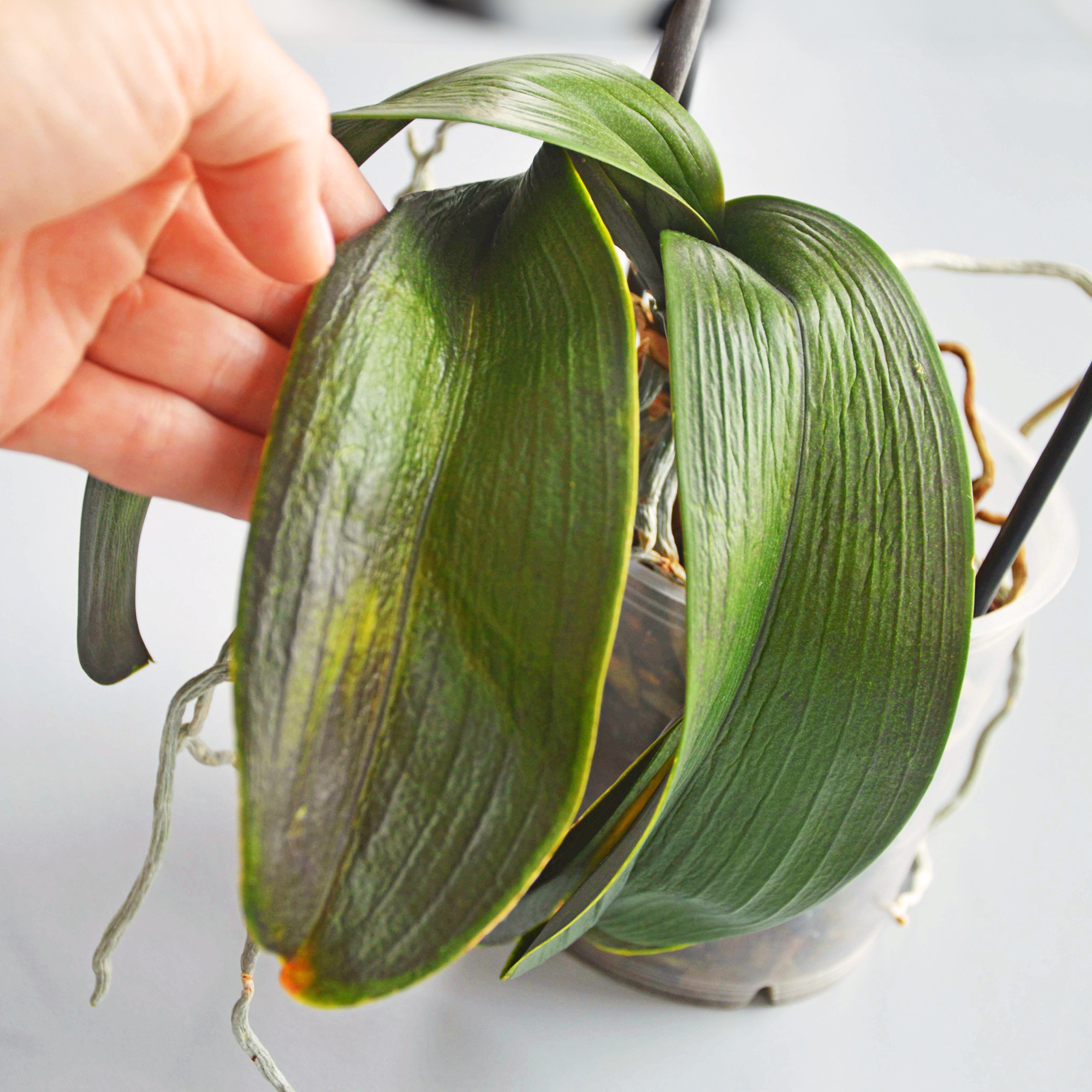 Orchid Leaves Wrinkled? 5 Common Causes & How To Restore Their Vitality
Orchid Leaves Wrinkled? 5 Common Causes & How To Restore Their VitalityAre your beloved orchid's leaves wrinkled? Worry not! Here are the most common causes for puckered orchid foliage, plus how to plump them back up.
By Tonya Barnett
-
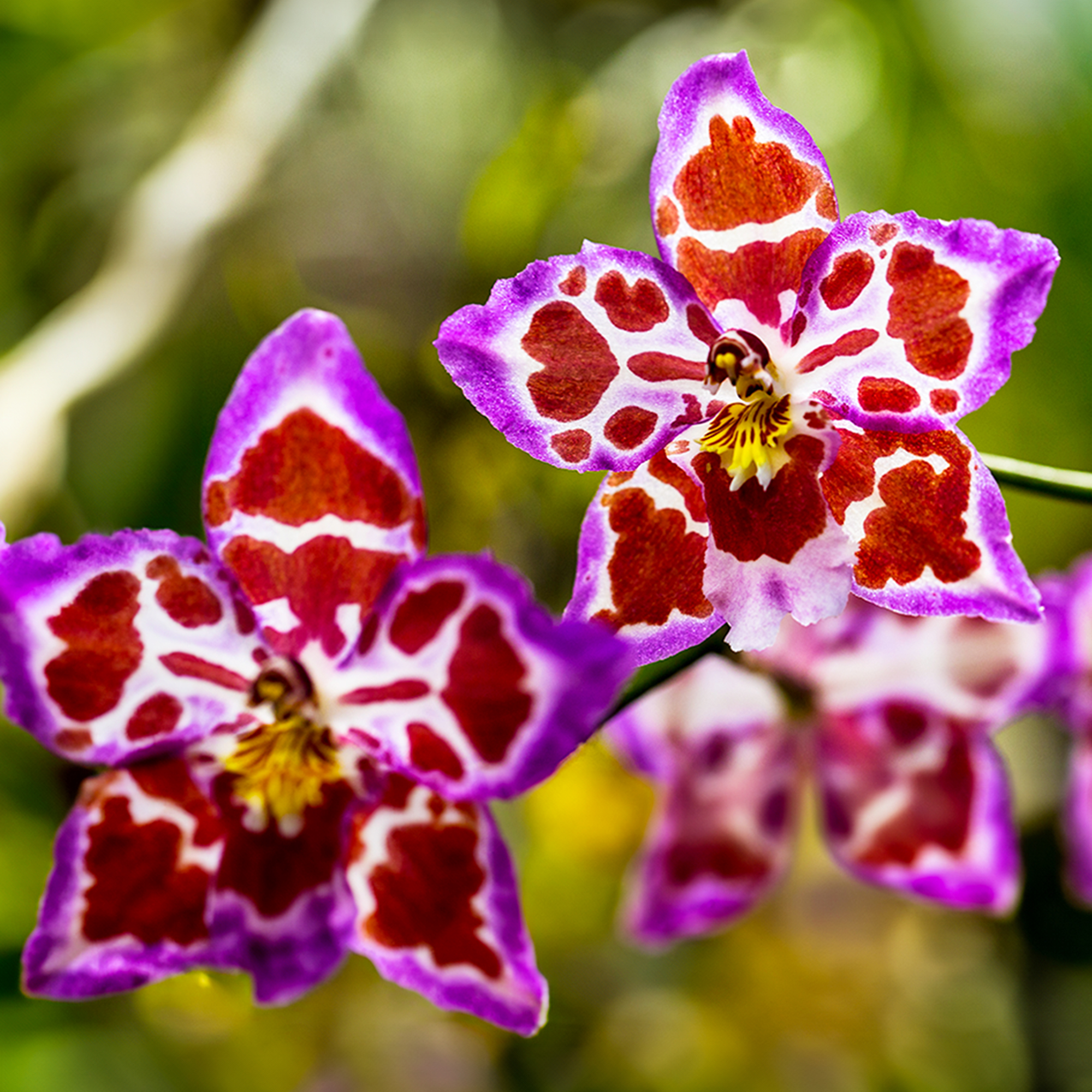 8 Rare Orchids That Make Stunning Houseplants – Some Are Surprisingly Easy To Grow
8 Rare Orchids That Make Stunning Houseplants – Some Are Surprisingly Easy To GrowDiscover unique orchids that will add exotic beauty to your home. Some make easygoing houseplants, while others offer a challenge for more seasoned growers.
By Melanie Griffiths
-
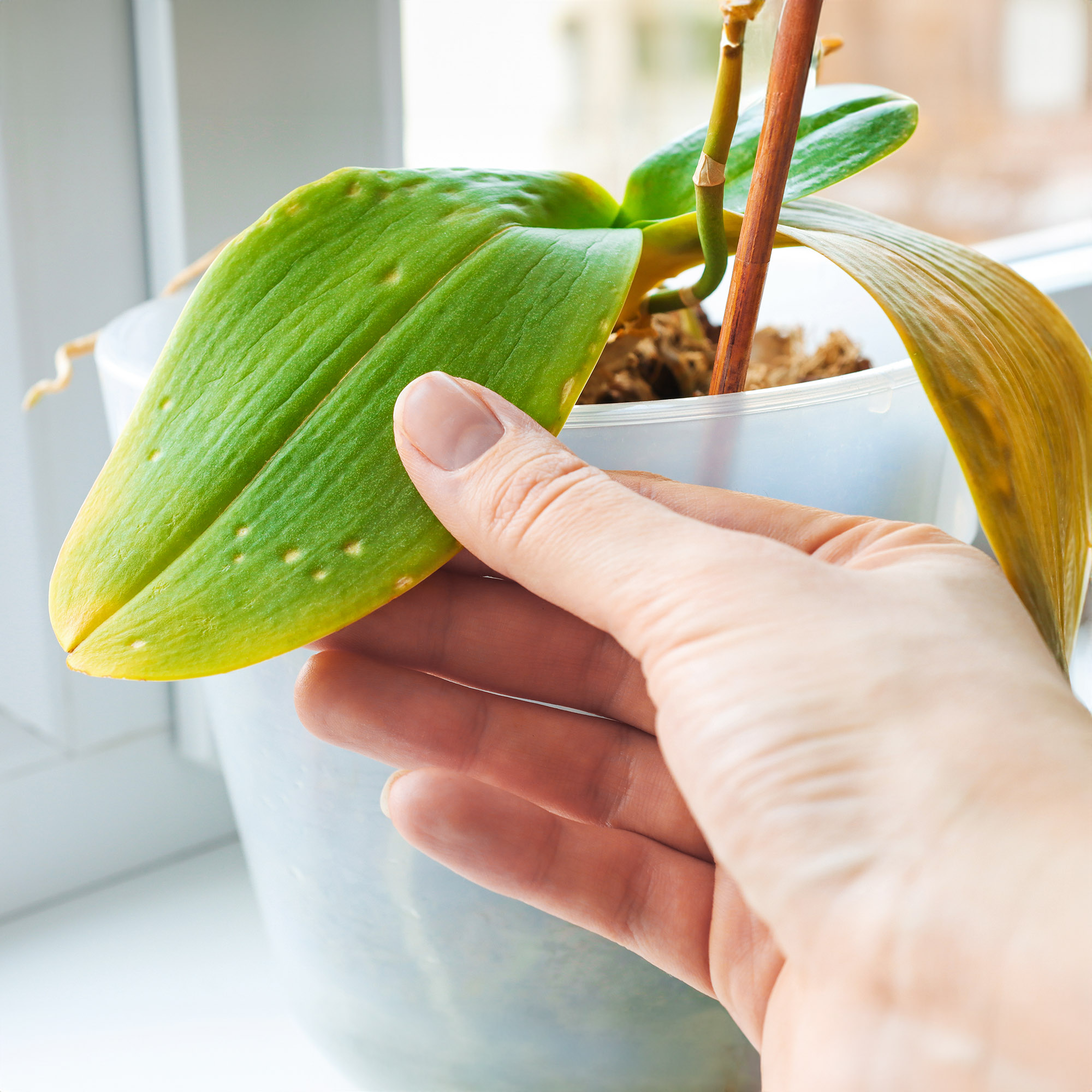 Why Is My Orchid Dying? 5 Common Causes & How To Save It Before It's Too Late
Why Is My Orchid Dying? 5 Common Causes & How To Save It Before It's Too LateStruggling to keep your orchid alive? Learn the top mistakes that cause orchids to decline – and the simple fixes to bring yours back to life.
By Bonnie L. Grant
-
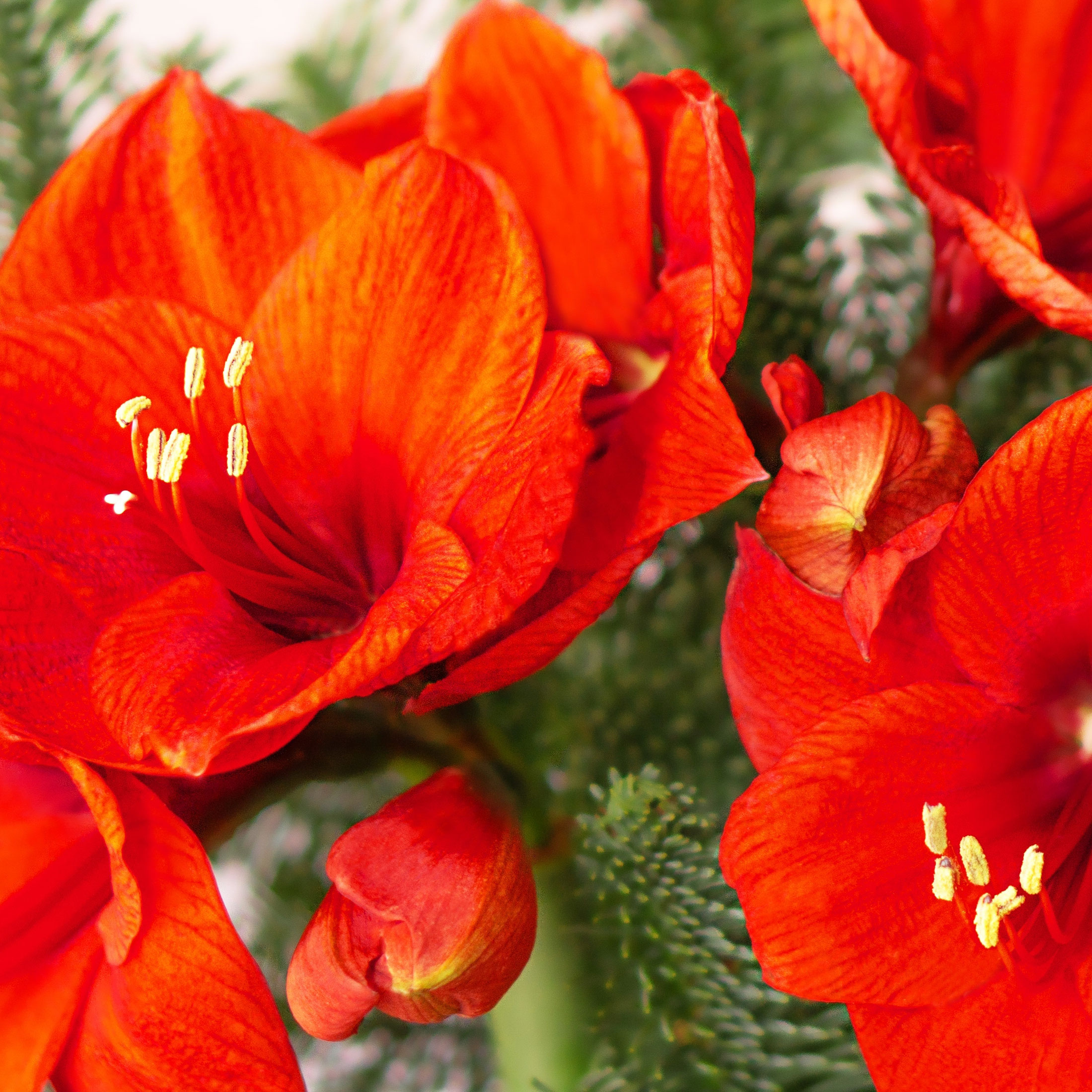 Warm Up Your Winter With Indoor Reds! 8 Red Amaryllis Varieties For Sizzling Seasonal Interest
Warm Up Your Winter With Indoor Reds! 8 Red Amaryllis Varieties For Sizzling Seasonal InterestWell loved as a bold decorative holiday bloomer, the red amaryllis is a hot favorite for winter displays. These red amaryllis varieties are guaranteed to fire up the season
By Tonya Barnett
-
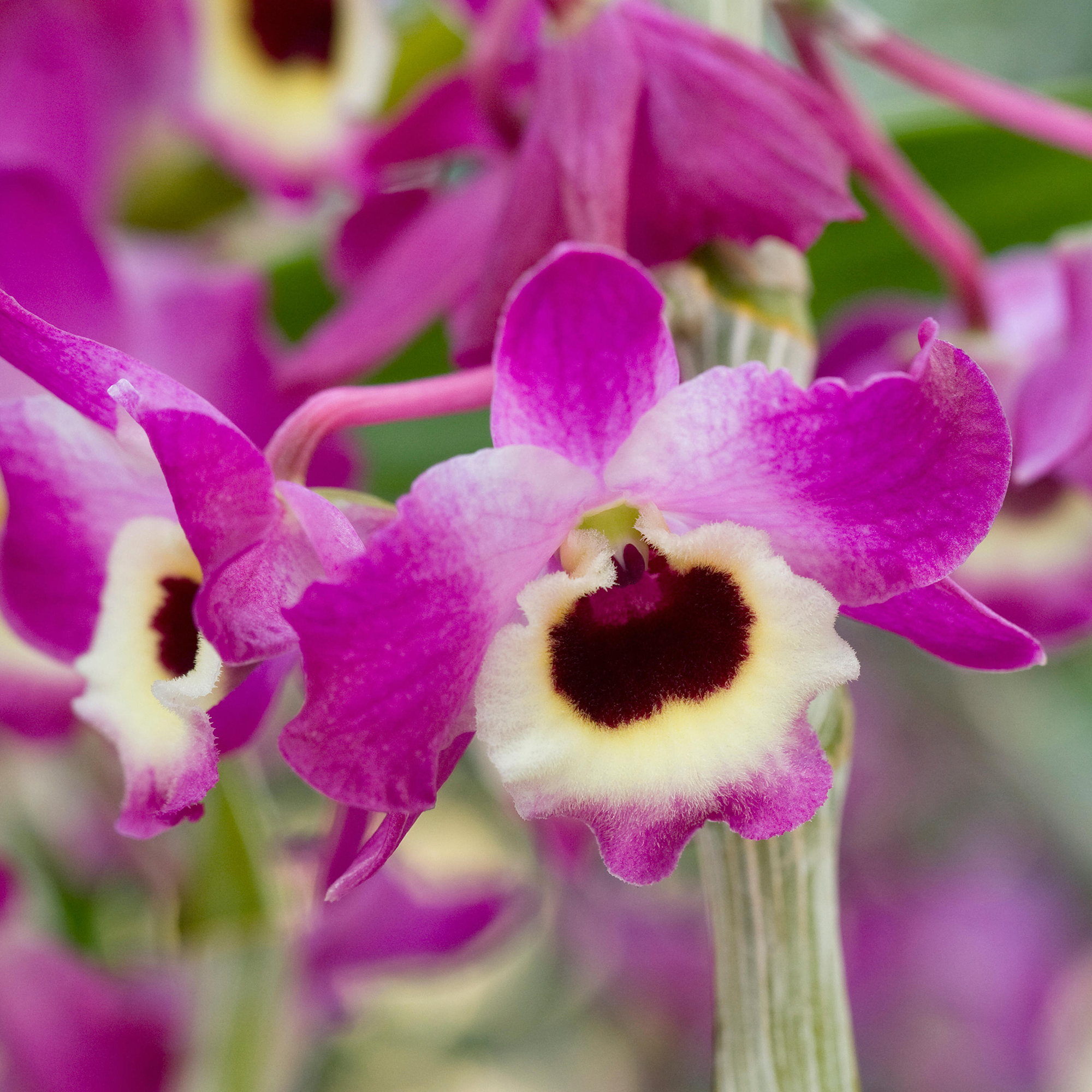 Dendrobium Nobile Orchid: How To Care For This Graceful, Easy-Going Houseplant
Dendrobium Nobile Orchid: How To Care For This Graceful, Easy-Going HouseplantLearn how to care for elegant dendrobium nobile orchids. These undemanding plants make a stunning addition to any orchid collection and are ideal for beginners.
By Bonnie L. Grant
-
 Poinsettia Pinks: 7 Pink Poinsettias To Grow For Neon Hot Tones And Cool Pretty Pastels
Poinsettia Pinks: 7 Pink Poinsettias To Grow For Neon Hot Tones And Cool Pretty PastelsWhile the traditional red poinsettia is a staple of many homes over the holiday period, they are not your only option. For cheerful brights or pastels, why not grow pink poinsettias?
By Tonya Barnett
-
 Want Amaryllis But Not Red? Try These 8 White Amaryllis Varieties For The Ultimate Elegance
Want Amaryllis But Not Red? Try These 8 White Amaryllis Varieties For The Ultimate EleganceYou’re probably familiar with the crisp red blooms of the traditional amaryllis – but if you feel like something more unusual and elegant, why not try white amaryllis?
By Mary Ellen Ellis
-
 Are Poinsettias Poisonous To Cats? What You Need To Know For Happy, Healthy Felines
Are Poinsettias Poisonous To Cats? What You Need To Know For Happy, Healthy FelinesThey have the potential to brighten up homes long after the holidays, but are poinsettias poisonous to cats? Make sure you read this before mixing the two!
By Susan Albert